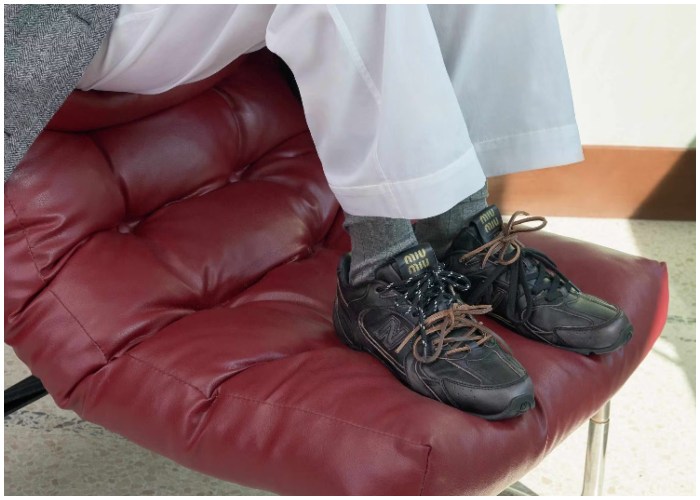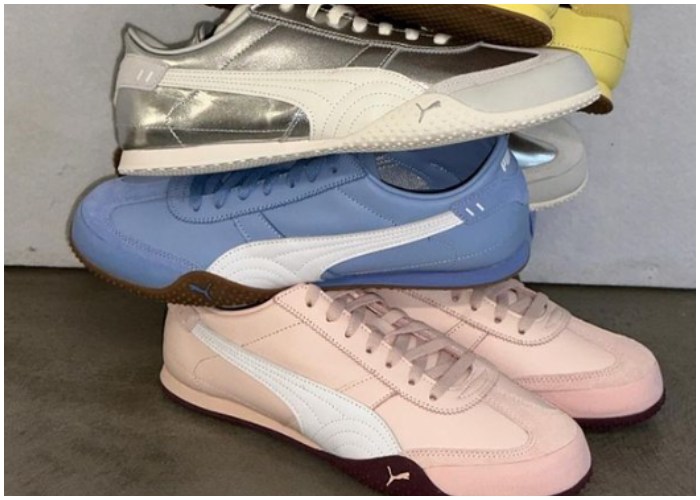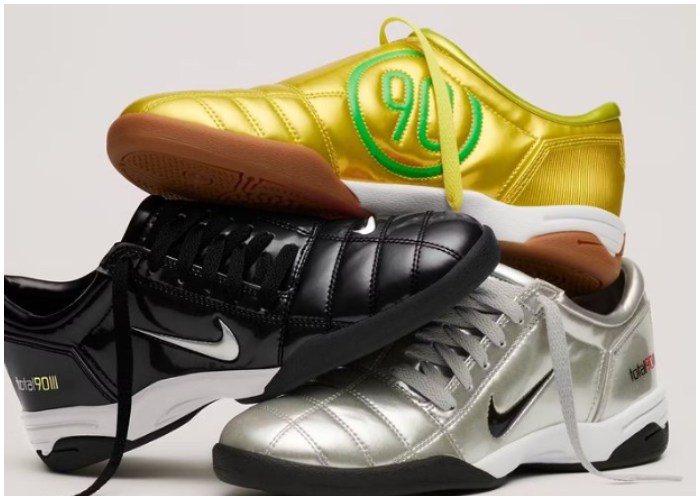Dad shoes have dominated sneaker culture for nearly a decade, with their chunky, oversized designs defining casual fashion. But as trends shift, low-profile, flat sneakers are stepping in to reshape the footwear landscape. Although this movement may not entirely dethrone the dad shoe, it signals a transformation in sneaker design, influenced by everything from luxury collaborations to minimalist streetwear. The question isn’t if dad shoes will disappear but how they’ll evolve alongside this flattening trend. Here’s a closer look at how the rise of flat sneakers is shaping the future of footwear.

From Chunky to Streamlined: A Shift in Sneaker Trends
The dad shoe trend started with heavy, unpretentious designs like Balenciaga’s Triple S, New Balance’s 550, and ASICS runners, making chunky sneakers universally acceptable. These shoes brought casual style to the mainstream by embracing heft and unapologetically oversized silhouettes. However, familiarity can breed contempt, and after years of seeing dad shoes everywhere, a hunger for something new has emerged.
This shift began with Wales Bonner’s reimagined adidas Samba collaboration in 2020, sparking interest in sleeker designs. By 2023, the low-profile trend was full force, as minimalist sneakers like the Onitsuka Tiger Mexico 66 gained popularity. Suddenly, flat footwear was not only a fashion-forward choice but a statement of style simplicity, offering a stark contrast to the thick soles that once ruled the streets.
High Fashion’s Role in the Flat Sneaker Movement
Luxury brands have played a surprising role in pushing the flat sneaker trend forward. High-end collaborations and reimagined classics from labels like Issey Miyake, Junya Watanabe, and Miu Miu have brought low-profile styles to the forefront. Miyake and Watanabe’s streamlined New Balance Minimus models, Miu Miu’s compressed New Balance 530, and PUMA’s Speedcat have signaled a turning point, steering consumer interest away from the bulky dad shoe toward a more refined look.

Designers like Coperni and Rombaut have also embraced the low-profile aesthetic, pushing PUMA models to even flatter extremes inspired by athletic footwear. This focus on slimmer silhouettes departs from the once-dominant trend of exaggeratedly thick soles, creating an “Overton window” effect that gradually shifts public preference toward a more minimalist style.
The Evolution of Classic Sneaker Brands
Traditional sneaker brands have noticed the shift in consumer preferences and are starting to adapt accordingly. New Balance, a longstanding dad shoe staple, revives styles like the New Balance 475 and 574, offering a more understated look while staying true to the brand’s classic roots. Similarly, ASICS is bringing back its GEL-Lyte III, emphasizing function and design while avoiding the chunky soles that dominated previous models.
Adidas, too, is adapting by reworking heritage styles like the Stan Smith and the Taekwondo model, both of which align with the flat sneaker aesthetic. These reimagined classics allow brands to maintain their identity while tapping into the growing popularity of low-profile designs, offering an alternative to ultra-chunky footwear for those seeking a cleaner, more streamlined look.
What’s Next for Dad Shoes?
While flat sneakers are gaining momentum, dad shoes aren’t disappearing entirely. Rather than a complete takeover, this shift is a gradual balancing act. Dad shoes will likely become less exaggerated, with slightly slimmer silhouettes that retain their appeal without the oversized look. The sneaker culture is too diverse and fragmented for one style to dominate completely, but trends have a trickle-down effect. The flattening of sneakers reflects broader cultural shifts, a move toward simplicity and understated style in contrast to the bold, maximalist designs of previous years.

Sneaker fans are unlikely to abandon thick-soled designs altogether, especially as brands like HOKA and ASICS continue to serve niche markets with ultra-cushioned, function-focused models. Still, as flat sneakers become more prevalent, dad shoes will adapt, becoming lighter and less bulky and ultimately evolving to fit the broader move toward minimalism.
The Future of Flat Footwear
The flat sneaker movement represents more than a trend; it reflects changing tastes and desires for simpler, more refined designs. As the chunky dad shoe slowly gives way to a sleeker aesthetic, sneaker culture is entering a new era that balances the past’s exaggerated designs with the understated, functional styles of today. Whether or not flat sneakers fully replace dad shoes, they are undoubtedly reshaping the footwear landscape, proving that sometimes, less is more.